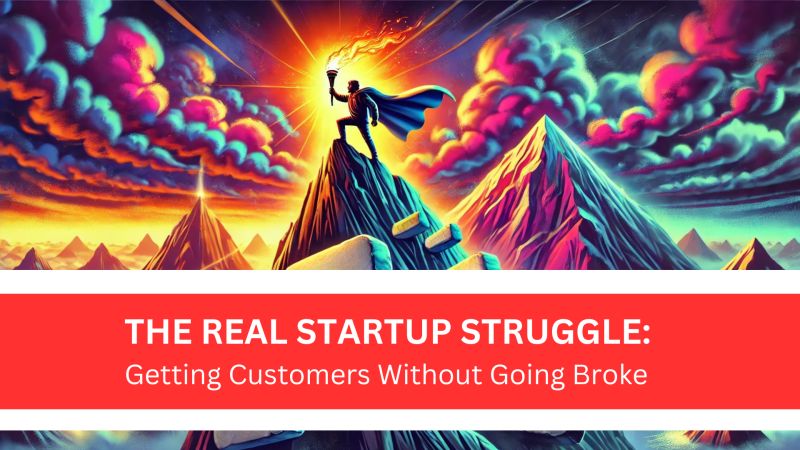
Building a great product is one thing – getting people to use it is a whole different battle. Most startups don’t have deep pockets for massive ad campaigns, and without a smart, resource-efficient way to acquire customers, even the best ideas fizzle out. So how do you land your first set of users without throwing money at the problem? The answer lies in playing smarter, not harder.
To break through the noise and gain traction, startups must master three essential strategies:
1) Hunt Down the Right Early Adopters:
a. Laser-focus on a niche rather than trying to sell to the masses
b. Leverage micro-communities where your target audience already hangs out
c. Make early adopters feel special by giving them early access
2) Dominate Locally Before Scaling Up
a. Focus on hyper-local marketing efforts – win in a single city or niche first
b. Form strategic local partnerships with businesses that already have your audience
c. Become a big fish in a small pond before jumping into the ocean
3) Use AI & Automation to Punch Above Your Weight
a. AI-powered personalization can make cold outreach feel warm
b. Chatbots & automated funnels can engage users even while you sleep
c. Predictive analytics helps you spend only on what works, avoiding wasted ad spend
WHY TRADITIONAL DIGITAL MARKETING FAILS STARTUPS
Many startups fall into the trap of hiring a digital marketing agency, expecting magic. But the reality is, most agencies operate on a fixed retainer + media spend model, which benefits them more than it benefits you.
– No direct performance accountability – they get paid whether or not you get results.
– One-size-fits-all tactics that fail to recognize your startup’s unique needs.
– High burn rates that drain budgets without meaningful traction.
For a cash-conscious startup, this approach is often a death sentence. So what’s the better alternative?
THE ONLY MARKETING PLAYBOOK STARTUPS NEED
The smarter way forward is a performance-driven, experimental approach that links every marketing rupee to tangible outcomes. Hiring growth hackers who focus on rapid testing and iteration, structuring pay-for-performance deals that tie spending to actual customer acquisition, and investing in in-house automation are all smarter ways to scale sustainably. More importantly, startups should prioritize virality, community-building, and word-of-mouth over paid acquisition – because if your product is remarkable, people will talk about it. Startups that crack this code don’t just gain traction – they create movements.
